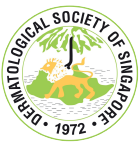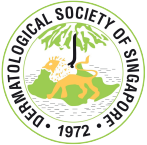The 25th World Congress of Dermatology in Singapore is organized by the Dermatological Society of Singapore under the auspices of the International League of Dermatological Societies (ILDS)
The theme of the Congress is “Dermatology Beyond Borders: Science – Care – Communities”
Congress Sessions
Distinguished Lectureships – by 5 global experts on important medical and scientific issues relevant to dermatology.
Keynote talks – by 15 leading clinicians and scientists on significant advances, from basic science to global dermatology.
Symposia – will present comprehensive views of dermatological topics, including science, diagnosis and management.
| Num. | Symposium Topics | Symposium Sessions |
|---|---|---|
| 1 | Acne, rosacea and hidradenitis suppurativa: new developments | Acne I: Pathophysiology and clinical manifestations |
| Acne II: Clinical manifestations II and therapies | ||
| Rosacea: pathophysiology and manifestations | ||
| Differential diagnosis and therapies | ||
| 2 | Allergology | Drug allergies I |
| Drug allergies II | ||
| Systemic sensitization | ||
| Type I and Type IV allergies | ||
| 3 | Antibodies and small molecules (e.g. JAK inhibitors, IFN antagonists) | Targeting cytokines with small molecules and antibodies |
| Targeting key messengers of inflammation | ||
| 4 | Atopic Dermatitis: new developments | Disease phenotypes |
| Genotypes and pathogenesis | ||
| Systemic and new treatments | ||
| The barrier and classical therapies | ||
| 5 | Autoimmune and infectious blistering diseases | Autoimmune bullous diseases I |
| Autoimmune bullous diseases II | ||
| Autoimmune bullous diseases III | ||
| Autoimmune bullous diseases IV | ||
| 6 | Autoinflammation, SAPHO, PAPA and neutrophilic dermatoses | Complex autoinflammatory diseases |
| Hidradenitis suppurativa | ||
| Neutrophilic dermatoses | ||
| Pathophysiology and clinical syndromes | ||
| 7 | Bacterial infections | Bacterial infections I Part 1 |
| Bacterial infections I Part 2 | ||
| Bacterial infections II Part 1 | ||
| Bacterial infections II Part 2 | ||
| 8 | Benign neoplasms | Benign Neoplasms I |
| Benign Neoplasms II | ||
| Disorders of sweat glands | ||
| Disorders of dermis and subcutaneous fat | ||
| 9 | Dermatologic emergencies: diagnosis and treatment | Dermatological emergencies I |
| Dermatological emergencies II | ||
| 10 | Dermatology in women and during pregnancy | Autoimmune diseases and nail disorders |
| Pregnancy | ||
| 11 | Dermato-oncology | Basic dermato-oncology |
| Merkel cell carcinomas | ||
| Sarcomas | ||
| Vascular sarcomas | ||
| 12 | Dermatopathology for the clinician | Advanced diagnostic tools in dermatopathology |
| Clinical pathological correlations | ||
| Communication between clinicans and dermatopathologists | ||
| Introduction to dermatopathology | ||
| 13 | Dermoscopy I | Dermoscopy; overview |
| dermoscopy: pigmented lesions I | ||
| dermoscopy: pigmented lesions II | ||
| Dermoscopy: special indications | ||
| 14 | Dermoscopy II | Dermoscopy: future developments |
| Dermoscopy: inflammatory diseases | ||
| Dermoscopy: Non-pigmented skin lesions | ||
| Dermoscopy: special indications | ||
| 15 | Digital Dermatology and Artificial Intelligence | Artificial Intelligence |
| Smartphone Apps and Social Media | ||
| Teledermatology | ||
| Wearables | ||
| 16 | Eczemas: the worldwide relevance | Contact allergens |
| Contact hypersensitivity | ||
| Skin barrier in eczema | ||
| Pruigo and eczema therapy | ||
| 17 | Ethics, quality of care, quality of life and costs | Access to care and treatments |
| Challenging decision making I | ||
| Challenging decision making II | ||
| Ethics in dermatology | ||
| 18 | Fungal diseases: cutaneous and subcutaneous | Differential diagnosis and diagnostic procedures |
| Inflammatory mycoses | ||
| Non-inflammatory superficial mycoses | ||
| Treatment options | ||
| 19 | Fungal diseases: Systemic mycoses | Deep fungal infections I |
| Deep fungal infections II | ||
| 20 | Genetics | Genetics: Adnexal and complex diseases |
| Genetics: Alopecias, infection and cancer | ||
| Genetics: Epidermal and dermal diseases | ||
| Genetics: Inflammatory Diseases | ||
| 21 | Geriatric dermatology | Dermatology in the Eldery I |
| Dermatology in the Eldery II | ||
| 22 | Granulomatous diseases (non-infectious) | Granulomatous diseases: I |
| Granulomatous diseases: II | ||
| 23 | Hair diseases | Alopecia areata and genetic disorders I |
| Androgenetic and sicatricial alopecia | ||
| Basic approaches to hair diseases | ||
| Genetic disorders II and special aspects | ||
| 24 | HIV and AIDS: update | HIV and AIDS Part I |
| HIV and AIDS Part II | ||
| HIV and AIDS Part III | ||
| HIV and AIDS Part IV | ||
| 25 | Immunosuppressive agents | Traditional immunosuppressive agents I |
| Traditional immunosuppressive agents II | ||
| 26 | Keratinocyte carcinomas | Basel cell carcinomas |
| Epidemiology and precursors | ||
| Squamous cell carcinomas | ||
| Therapy of advanced squamous cell carcinomas | ||
| 27 | Lasers and laser medicine | Basics And Classical Indications |
| Lasers: new developments | ||
| Lasers: special aspects | ||
| Lasers: special indications | ||
| 28 | Lymphomas | Cutaneous lymphomas: I |
| Cutaneous lymphomas: II | ||
| Cutaneous lymphomas: III | ||
| Mycosis fungoides and Sézary syndrome | ||
| 29 | Medical aesthetics I | Chemical peels, PRP and mesotherapy |
| Complications | ||
| Fillers and threads | ||
| Rejuvenation and skin tightening with lasers and EBDs | ||
| 30 | Medical aesthetics II | Botulinumtoxin |
| Practice management including psychology, legal issues, qualifications, compliances | ||
| Treating classic medical dermatology indications excluding scars with lasers | ||
| Whats new in topicals and ingredients for rejuvenation and signs of ageing | ||
| 31 | Melanomas | Early melanomas |
| Epidemiology and genetic changes | ||
| Treatment side effects and new developments | ||
| Systemic therapies and stage IV melanoma | ||
| 32 | Mixed connective tissue diseases | Mixed connective tissue diseases: I |
| Mixed connective tissue diseases: II | ||
| Mixed connective tissue diseases: III | ||
| Mixed connective tissue diseases: IV | ||
| 33 | Mucosal and cutaneous reactions to drugs and infections | Drug reactions: interference with signalling pathways |
| Mucocutaneous reactions to drugs and infections: I | ||
| Mucocutaneous reactions to drugs and infections: II | ||
| Stevens Johnson Syndrome and Toxic Epidermal Necrolysis | ||
| 34 | Mucosal Diseases | Mucosal diseases I |
| Mucosal diseases II | ||
| 35 | Mycobacteria | Atypical mycobacteria and Leprosy I |
| Leprosy II | ||
| Leprosy III: Prevention and Therapy | ||
| Tuberculosis | ||
| 36 | Nails And Nail Surgery | Nail diseases: I |
| Nail diseases: II | ||
| Malignant tumours of the nails | ||
| Surgery and histopathology of the nails | ||
| 37 | Neglected Tropical Diseases | Important causes of NTD |
| Spectrum of Neglected Tropical Diseases | ||
| 38 | New drugs, new indications, new side effects | New therapies in dermatology oncology: I |
| New therapies in dermatology oncology: II | ||
| 39 | Parasitic infections | Deep parasitic infections |
| Introduction and leishmaniasis | ||
| Scabies | ||
| Superficial infections and injuries | ||
| 40 | Pediatric dermatology | Emerging treatments in special topics |
| Hereditary and inflammatory diseases of childhood | ||
| Inflammatory diseases of childhood | ||
| Infectious diseases of childhood | ||
| 41 | Phlebology and vascular diseases | Haemangiomas and vascular malformations |
| Phlebology | ||
| 42 | Photodermatology | Introduction |
| Photodermatoses | ||
| Phototherapies | ||
| UV in health and disease | ||
| 43 | Physical therapies: PDT, cryotherapy, peeling, iontophoresis | Physical therapies I |
| Physical therapies II | ||
| 44 | Pruritus and dysaesthesias | Classical and new treatments for pruritus |
| Mechanisms of pruritus | ||
| Pruritus in different skin types | ||
| Special manifestations of pruritus | ||
| 45 | Psoriasis | Psoriasis I |
| Psoriasis II | ||
| Psoriasis III | ||
| Psoriasis IV | ||
| 46 | Psychodermatology | Burden of disease I |
| Burden of disease II | ||
| Psychodermatology I | ||
| Psychodermatology II | ||
| 47 | Sexually transmitted diseases (STD) – what is relevant in 2023 | Gonorrhea and Chlamydia |
| Other forms of urethritis and HPV | ||
| STDs in Africa and syphilis | ||
| STDs: Worldwide and regional aspects | ||
| 48 | Skin aging: Extrinsic and intrinsic factors | Dermal skin ageing |
| Mechanism and factors of skin ageing | ||
| Molecular mechanisms of ageing | ||
| Special aspects | ||
| 49 | Skin disease in general medicine and skin signs of internal disease | Endocrine Disorders |
| Immune Mediated Inflammatory Diseases | ||
| Metabolic Disorders | ||
| Paraneoplastic Disorders | ||
| 50 | Skin of colour | Skin of Colour I: Inflammatory diseases |
| Skin of Colour II: Adnexal glands and scar formation | ||
| Skin of Colour III: Pigmentary disorders and asthetics | ||
| Skin of Colour IV: Special topics | ||
| 51 | Skin optics | Artifical intelligence diagnosis |
| Skin optics | ||
| 52 | Skin ulcers and keloids | Biology of wound healing |
| Chronic leg ulcers | ||
| Pathological wound healing and keloids | ||
| Treatment options for keloids and hypertrophic scars | ||
| 53 | Surgical therapy I | Basic principles for successful dermatologic surgery: I |
| Basic principles for successful dermatologic surgery: II | ||
| Basic To intermediate level reconstructions and surgical techniques: I | ||
| Basic To intermediate level reconstructions and surgical techniques:II | ||
| 54 | Surgical therapy II | Advanced reconstruction: I |
| Advanced reconstruction: II | ||
| Dermatosurgery for skin tumors:I | ||
| Dermatosurgery for skin tumors: II | ||
| 55 | Topical therapies | Topical Therapies I |
| Topical Therapies II | ||
| Topical Therapies III | ||
| Topical Therapies IV | ||
| 56 | Unique dermatology issues seen in migrants and refugees | Skin issues in newly arriving migrants and refugees I |
| Skin issues in newly arriving migrants and refugees II | ||
| 57 | Urticaria and angioedema | Urticaria and angiodema I |
| Urticaria and angiodema II | ||
| 58 | Vasculitis and vasculopathies | Vasculitis |
| Vasculopathies | ||
| 59 | Viral infections | Common viruses |
| Herpes viruses | ||
| HPV | ||
| Special aspects | ||
| 60 | Vitiligo, melasma and hyperpigmentation | Vitiligo: Introduction and Overview |
| Vitiligo: Procedural Therapy and Special Aspects |
Controversies in Dermatology – these will feature 8 debate-style presentations for-and-against contentious or disputed statements.
Courses – 24 didactic sessions for participants who wish to gain new knowledge in a field where they may not already be familiar.
Expert forums – in-depth interactive session on specific topic, the format will allow more time for discussion and audience participation.
Free communications, late-breaking and residents sessions – abstract driven, oral as well as electronic posters.
DSS/LADS Sessions














